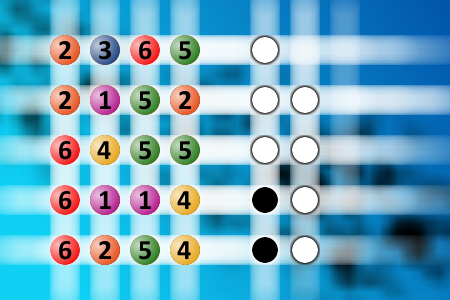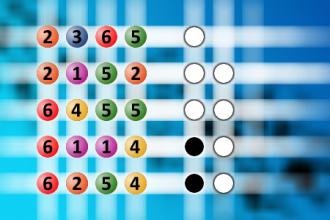What a winning combination?
The computer chose a secret code (sequence of 4 digits from 1 to 6). Your goal is to find that code. Black circles indicate the number of hits on the right spot. White circles indicate the number of hits on the wrong spot.Correct answers: 50
The first user who solved this task is James Lillard.
#brainteasers #mastermind

A woman places an ad in the lo...
A woman places an ad in the local newspaper. “Looking for a man with three qualifications: won’t beat me up, won’t run away from me, and is great in bed.” Two days later her doorbell rings. “Hi, I’m Tim. I have no arms so I won’t beat you, and no legs so I won't run away.” “What makes you think you are great in bed?” the woman retorts. Tim replies, “I rang the doorbell, didn’t I?”

